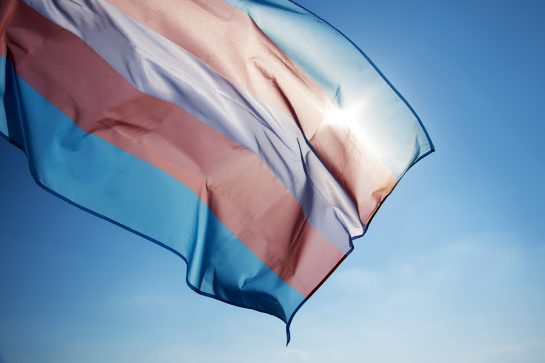Since 2009, March 31 marks Transgender Day of Visibility. Celebrated by LGBTQ+ communities across the globe, this day serves as a chance to honor progress that transgender individuals and groups have made. It also offers a chance to improve the ways social services address transgender and gender-nonconforming communities.
On Transgender Day of Visibility, we face two equally important tasks.
The first task is help trans people tell their story. Only about 30% of Americans know a trans person, meaning that for most Americans, their understanding of what it is to be trans and who trans people are is confined to the media narrative (GLAAD, accessed 2024). Transgender Day of Visibility was created to empower trans people to help reclaim that narrative, and to dispel stereotypes and misrepresentations.
The second task is to help support trans people, especially in circumstances where they are often among the most vulnerable. When it comes to issues like homelessness and similar issues, LGBTQ+ young people are consistently more vulnerable than their non-LGBTQ+ counterparts.
A recent study showed that trans young people in particular are overrepresented among people experiencing homelessness, with nearly one in four trans young adults (18–25) experiencing homelessness (The Trevor Project, 2022). The same study found that LGBTQ+ young people report significantly higher rates of self-harm, and poor mental health, often related to hostile home and social environments. This aligns with research highlighted by Youth.gov, demonstrating significant discrepancies and disproportionate rates of homelessness and self-harm among LGBTQ+ youth (Youth.gov, accessed 2024).
Additionally, per a recent study published in the American Journal of Public Health, transgender and nonbinary people are more than twice as likely to experience intimate partner violence than their cisgender peers (Peitzmeier, Sarah M, et al., 2020). And with an onslaught of bills targeting this already vulnerable community—including over 142 bills introduced or passed across the US that restrict gender-affirming care (Funakoshi and Raychaudhuri, 2023)—it’s more important than ever to support and empower trans people.
What Can I Do?
To help trans people and their friends, families, and allies find ways to support trans people and trans visibility, GLAAD has provided a list of opportunities at https://glaad.org/tdov/. These include educational content, social media campaigns, fact sheets, and more.
For social services organizations, support may be more direct as you engage with vulnerable people in your community. Some ways you and your organization may show your support and create a more inclusive environment:
- Ask people for their preferred pronouns.
- Share your own preferred pronouns. This can help reduce stigma.
- Use an individual’s chosen name instead of birth name.
- Use intake forms that list options for transgender people.
- Stay updated on relevant laws, debated legislation, and events.
- Get to know the transgender community around you.
- Share a social media post for Transgender Day of Visibility.
Eccovia is proud to work with customers like the Jacksonville Area Sexual Minority Youth Services (JASMYN), who provide critical supportive services to LGBTQ+ youth in the Jacksonville, Florida area.
Check out our case study for JASMYN here!
We’re also honored to work with organizations like Safe Horizon that provide safe havens for victims of intimate partner violence and other forms of domestic violence.
Read our case study for Safe Horizon here!
Finally, if your social service organization is looking for a case management platform designed to support the diversity and unique needs of the people you serve, we’re here to help. Our team of experts can walk you through what makes our services like ClientTrack® the industry-leading system for over 20 years. Featuring comprehensive case management, a comparable database for Victim Services Providers, and best-of-class data privacy and security, ClientTrack can help. Reach out for a demo today.
Sources
“Transgender Day of Visibility.” Gay and Lesbian Alliance Against Defamation (GLAAD). Accessed 3/11/2024. https://glaad.org/tdov/.
“Homelessness and Housing Instability Among LGBTQ Youth.” The Trevor Project. February 2022. https://www.thetrevorproject.org/wp-content/uploads/2022/02/Trevor-Project-Homelessness-Report.pdf.
“Youth Topics: Homelessness and Housing.” Youth.gov. Accessed 2024. https://youth.gov/youth-topics/lgbtq-youth/homelessness.
Peitzmeier, Sarah M et al. “Intimate Partner Violence in Transgender Populations: Systematic Review and Meta-analysis of Prevalence and Correlates.” American Journal of Public Health vol. 110,9 (2020): e1-e14. doi:10.2105/AJPH.2020.305774.
Funakoshi, Minami, and Raychaudhuri, Disha. “The Rise of Anti-trans Bills in the US.” Reuters, August 19, 2023. https://www.reuters.com/graphics/USA-HEALTHCARE/TRANS-BILLS/zgvorreyapd.



